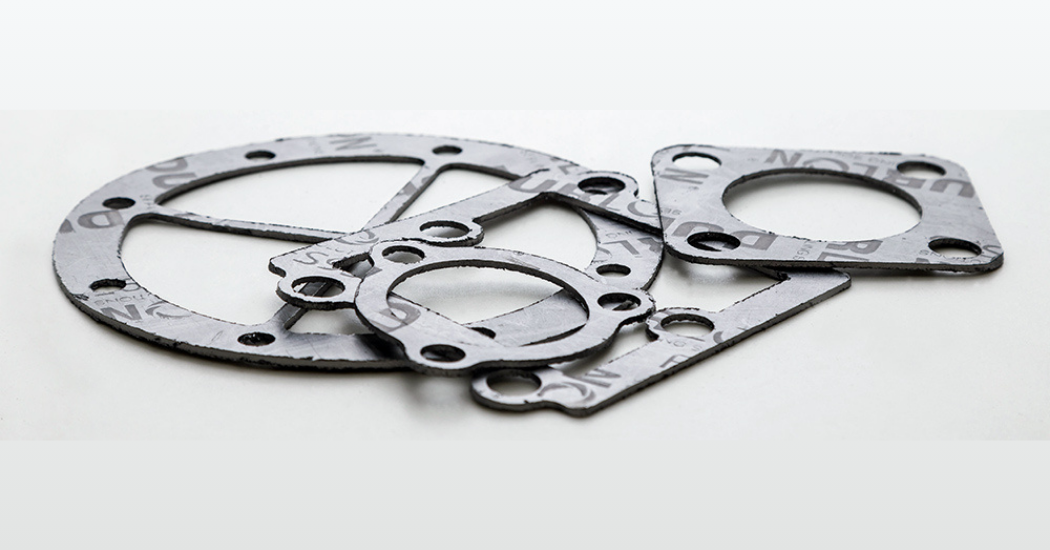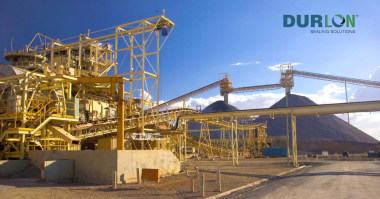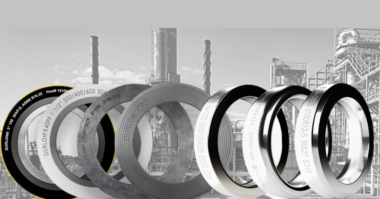Among the many different types of gaskets used in various industrial installations, those made from high-performance graphite are particularly popular for their ability to create mechanical seals under high pressure and temperatures. No matter how tightly the bolted flange joint sealing surfaces are pulled together, there are still likely to be small imperfections on the sealing surface. These small imperfections can cause leaks and this is where graphite type gaskets can be very effective in reducing product loss.
What Are the Different Graphite Gasket Types?
Durlon manufactures four types of flexible graphite gaskets:
FGS95: A standard industrial-grade sheet with no binders or resins, best used in industrial applications such as oil refineries, power plants and chemical process plants.
FGM316: An inhibited grade sheet laminated with layers of 316 stainless steel foil. This product is designed for applications with high pressure. It has above-average burst resistance, exceptional rigidity, and fire resistance.
FGT316: A standard industrial grade sheet mechanically bonded over a stainless-steel tang core. Like the FGM316, this gasket is perfect for conditions of high pressure, but also offers improved handleability.
FGL316: Made from an industrial-grade sheet laminated with an adhesive bond on both sides of a 316 stainless steel foil core, this gasket offers the perfect combination of high performance and handleability.
Applications of Graphite Gaskets
Graphite is perfect for applications that involve high temperatures and high pressure. They are most often used for oil and gas applications, chemical processing plants, and power plants. Different graphite gasket types can be used for dry sheet lubricants, heat dissipation barriers, chemical shields, cooling towers, and any application that uses hot oil and heat exchangers, among others.
How Well Do Graphite Gaskets Perform Under High Temperature and Pressure?
Graphite is a tough, non-porous material. Combined with an appropriate metal core, its hardiness is further enhanced to make it powerfully resistant to heat and pressure. It can typically withstand temperatures up to 850 degrees Fahrenheit, meaning that it is essentially unaffected by heat across a broad temperature range. High-temperature graphite gaskets have low thermal expansion, which means that they don’t expand or contract when temperatures change. As they prevent thermal expansion, they also help to prevent pipes from bursting.
What Are the Properties of Graphite Gasket Material?
Graphite gasket materials’ resistance to high temperatures and pressures has already been mentioned. They have a few other beneficial attributes as well. They are non-hazardous, meaning they present no potential dangers for installers or repair technicians who handle them. They are also safe for people to work around every day.
Graphite gaskets are also exceptionally strong and durable. They are resistant to corrosion, regardless of heat and pressure. They also have a low level of creep relaxation – the measure of how much a gasket material thins out under pressure – so it retains the same thickness, helping to maintain a tight, steady joint. Once installed, graphite gaskets will not need to be replaced for a very long time.
Lastly, graphite is a non-stick material, which is crucial, because it enables gaskets to keep a joint sealed, moving around to fill uneven gaps when necessary.
Durlon is one of the most recognizable brands when it comes to sealing solutions. Durlon manufactures a wide variety of gaskets from a range of materials, including graphite. Contact Durlon for more information about our graphite gaskets and other products.




